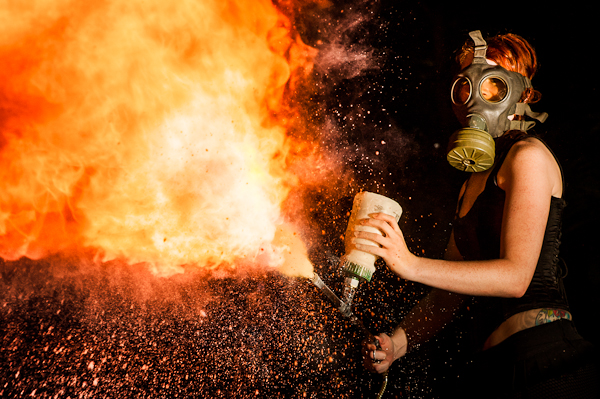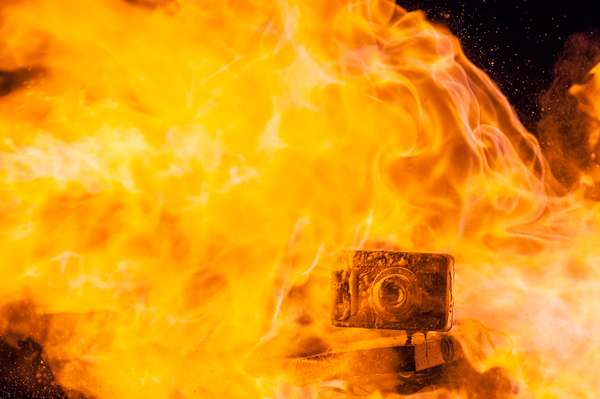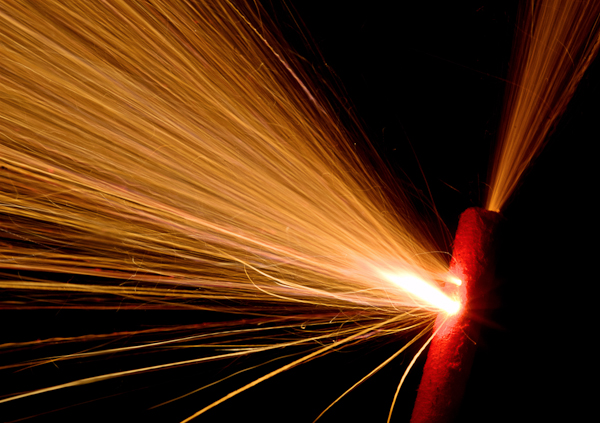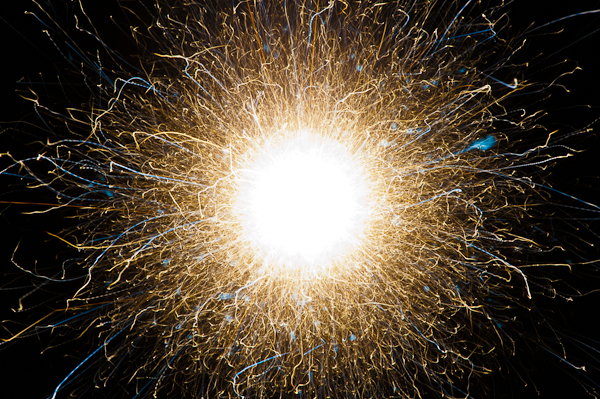A Guest Post by Jon Beard

1/320 f/8 ISO1000 105mm
Safety First

1/15 f/16 ISO200 105mm
- Think ahead and plan your shoot from beginning to end.
- Have a plan for putting the fire out should it get loose.
- Do not work near anything that you do not want on fire as well.
- Work in a well-ventilated area.
- Be sure you’re working somewhere that if the worst happens, the worst isn’t all that bad.
- And if the grandmothers in the area where I grew up can be believed: Don’t play with matches or you’ll wet the bed.
You’ll find fire used in three main ways in a photo. It can be the primary subject, an accentuating element, or the primary light source. Typically, you’ll have a combination of the three, but understanding them individually is the best way to start.
Fire as the Subject
With these shots, the main draw and focus is on the flame (or effects of it) and the detail that can be shown within it.In most cases you’ll want to use a fast enough shutter speed to freeze motion in order to see the detail in the flame. As always, “fast enough” is relative to what you’re shooting, but a good starting point is around 1/250 or faster. As your shutter speeds increase you’ll need to use wider apertures and higher ISOs.

1/2000 f/5.6 ISO2000 105mm

1/250 f/13 ISO400 105mm

1.6” f/40 ISO100 105mm

38” f/36 ISO100 105mm
How to Photograph Fire
No comments:
Post a Comment